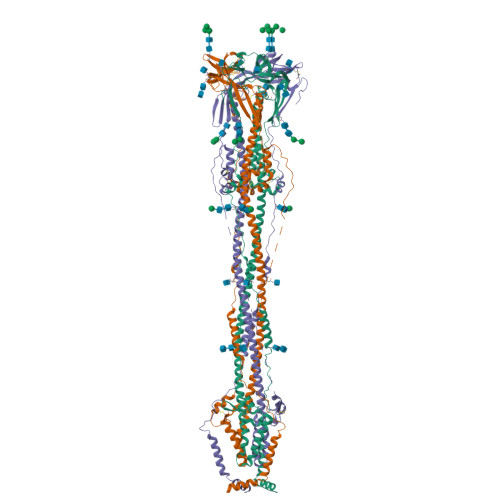Cryo-EM structure of SARS-CoV-2 postfusion spike in membrane.
Shi, W., Cai, Y., Zhu, H., Peng, H., Voyer, J., Rits-Volloch, S., Cao, H., Mayer, M.L., Song, K., Xu, C., Lu, J., Zhang, J., Chen, B.(2023) Nature 619: 403-409
- PubMed: 37285872
- DOI: https://doi.org/10.1038/s41586-023-06273-4
- Primary Citation of Related Structures:
8FDW - PubMed Abstract:
The entry of SARS-CoV-2 into host cells depends on the refolding of the virus-encoded spike protein from a prefusion conformation, which is metastable after cleavage, to a lower-energy stable postfusion conformation 1,2 . This transition overcomes kinetic barriers for fusion of viral and target cell membranes 3,4 . Here we report a cryogenic electron microscopy (cryo-EM) structure of the intact postfusion spike in a lipid bilayer that represents the single-membrane product of the fusion reaction. The structure provides structural definition of the functionally critical membrane-interacting segments, including the fusion peptide and transmembrane anchor. The internal fusion peptide forms a hairpin-like wedge that spans almost the entire lipid bilayer and the transmembrane segment wraps around the fusion peptide at the last stage of membrane fusion. These results advance our understanding of the spike protein in a membrane environment and may guide development of intervention strategies.
Organizational Affiliation:
Division of Molecular Medicine, Boston Children's Hospital, Boston, MA, USA.























